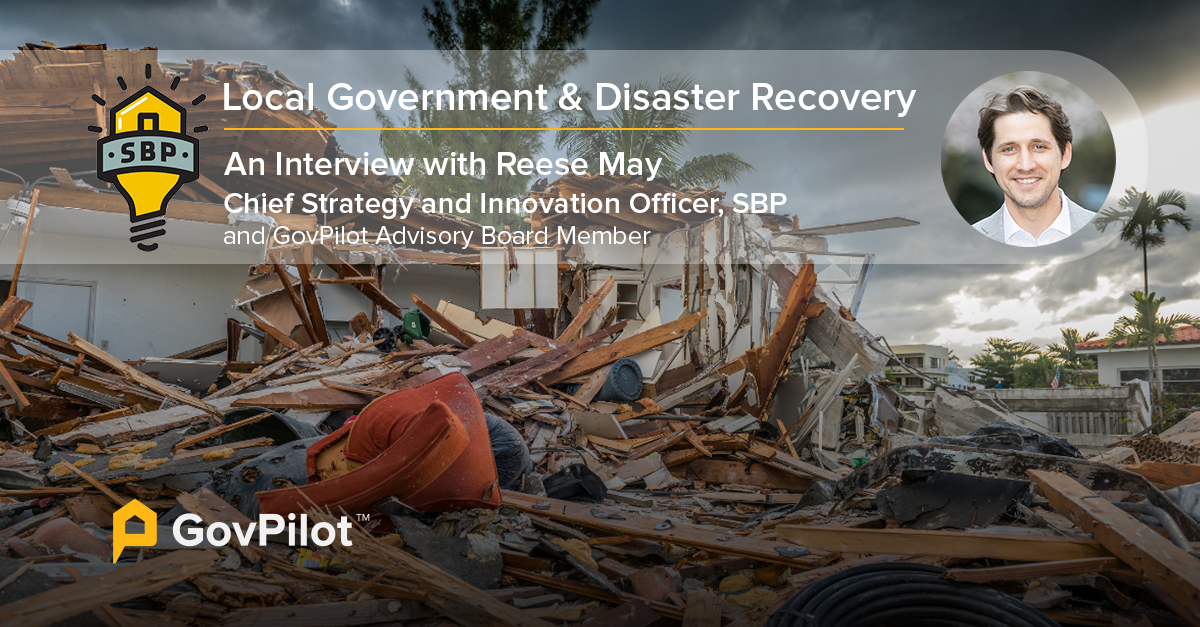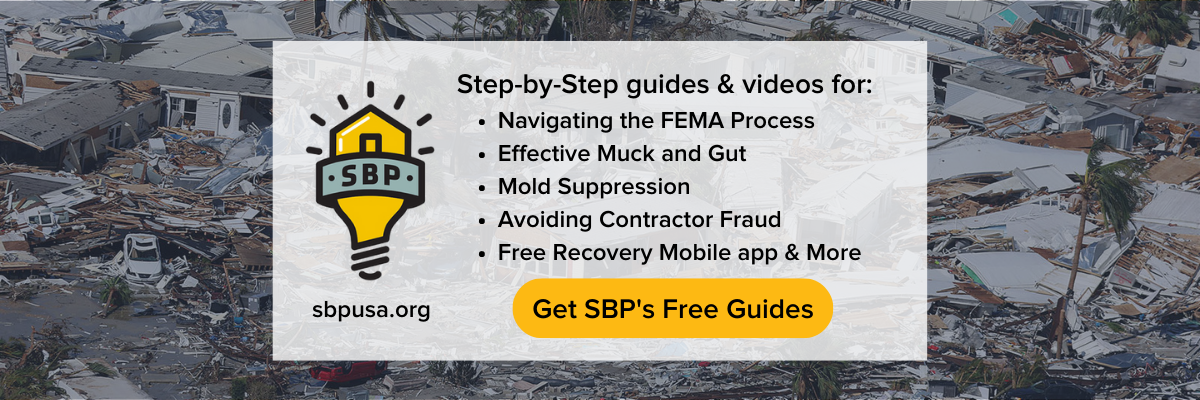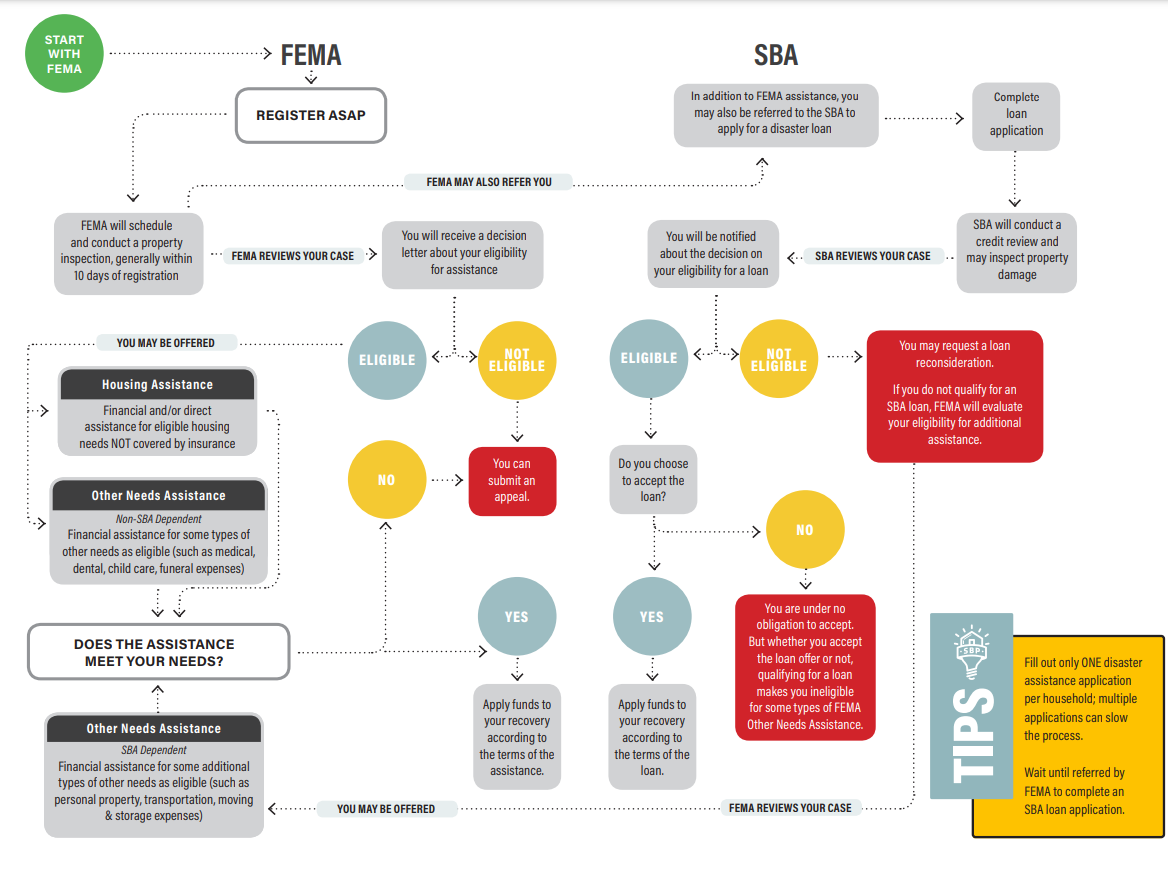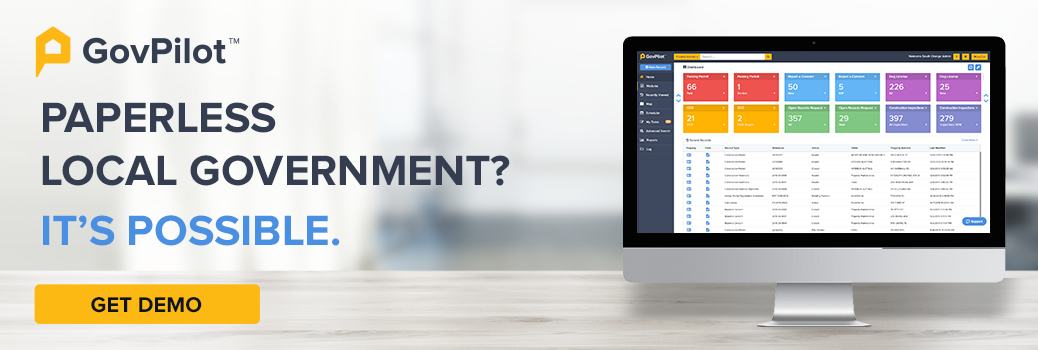Billion dollar climate disasters are occurring across the U.S. with increasing frequency and severity. Southwestern Florida is reeling from the devastation caused by Hurricane Ian - one of the strongest, costliest storms to hit the country.
But it's not just the headline making disasters that require smart mitigation and efficient recovery strategies. Local governments and their leaders everywhere must understand how best to prepare and inform their citizens, and how - in the event of a disaster - to implement an effective, equitable recovery that is prompt and predictable.
Local and state governments are tasked with rebuilding communities, and economies - a process which takes years, and continues long after the national news crews leave and media attention fades. Often, at no fault of their own, these leaders and staff lack the in-depth knowledge to do this.
Prior to joining GovPilot, I served as the Director of Communications for SBP - a nonprofit national disaster recovery organization which as part of its mission advises local leaders both before and after disaster. While there I had had the opportunity to see up close many of the inefficiencies which plague disaster recovery in America at a time when disasters are increasing due to climate change.
Knowing this, I reached out to Reese May, SBP's Chief Strategy and Innovation Officer and a current GovPilot Advisory Board Member for his take on what state and local government leaders must understand about the recovery process and be able to communicate to their constituents.
The following interview has been edited for clarity, and contains critical information for local government leaders and their constituents. If your community has been impacted by disaster please share these free resources with your constituents, and reach out to SBP whose contact information is below.
What is SBP? What does the organization do in terms of disaster recovery, and what is your role?
Evan Achiron
Thanks for your time Reese, I know the recent floods in Kentucky, Hurricane Fiona in Puerto Rico, and Hurricane Ian in Southwest Florida have made you quite busy right now. I’ve had the privilege of working with you in the past when I was Director of Communications at SBP, and you’ve now been gracious enough to join the GovPilot advisory board, but can you introduce yourself and let us know a little bit more about what SBP is and does?
Reese May
Of course, I am the Chief Strategy and Innovation Officer for SBP which is a nonprofit disaster preparedness and recovery organization founded in 2006 in New Orleans - actually St. Bernard Parish - just southeast of New Orleans where 100% of housing stock was lost after Hurricane Katrina.
I'm a two time combat veteran of the U.S. Marine Corps. I grew up in Mendenhall, Mississippi and I moved to New Orleans after Hurricane Katrina and later to New York after Superstorm Sandy - where I committed the cardinal sin that they never forgive southern men for - I married a woman from New York City. So I'm here now and I oversee most of the ways in which SBP interacts with the government at the Federal, state and local levels.
The St. Bernard Project began just as a lawyer and a teacher who relocated from Washington, DC to Louisiana and rebuilt homes for people who owned their homes but could not afford market rate contractors to rebuild because they were uninsured - and they desperately wanted to stay in their communities.
We did that work in New Orleans and later in Joplin, Missouri, in New York, New Jersey, and Texas and South Carolina and West Virginia and Puerto Rico and a handful of other places… and in each community, we rebuilt homes for hundreds of people, but we saw thousands of people who hadn't had the appropriate insurance product in place, or who hadn't been helped by another nonprofit organization in the community, or who importantly, weren't effectively served - or served at all - by government programs intended to assist disaster survivors. Often these state and local rebuilding programs repeated the same costly mistakes made during prior recoveries. So SBP began rebuilding homes for people through donations and grants. But as we grew and expanded geographically and worked on more recoveries, we realized that rebuilding homes is really just kind of putting a band aid on a bullet wound.
How does SBP work today, across the country to shrink time between disaster and recovery?
Evan Achiron
And so based on that experience, how has SBP evolved into the nationally recognized organization it is today?
Reese May
SBP today is an organization that focuses on intervening in the disaster survivor experience in five different ways:
1. Rebuild
We build/rebuild houses for people before disasters and after disasters. We do it affordably, innovatively, and resiliently. And we do that using tax credits, traditional investment, and philanthropic investment in any way we can think of.
Building is in our DNA, so we always do that efficiently thanks to one of our corporate partners - Toyota - utilizing their Toyota Production System (TPS).
2. Prepare
We also prepare. We know that when folks have disaster insurance products in place, they often don't need the assistance of government or nonprofit providers. And so we advocate everywhere we can that folks get the appropriate homeowners and even more importantly, the appropriate flood insurance products in place. So that if they're impacted by those disaster events, they’ll get the resources they need to recover.
This means that we teach individuals and small to medium sized businesses how to better understand and mitigate their risk. Again, preparedness for us means less recovery later. So it's an important intervention.
3. Share
We share our resources with other nonprofit organizations after disasters. We understand that it's cost and time intensive for SBP to go to a new place and start a new operation, and that sometimes our efforts can conflict with those of local organizations or draw limited resources and divide them among an even greater number of organizations. And so we try wherever we can to share our resources with existing organizations.
There's a Habitat for Humanity, a Rebuilding Together, or a United Way in almost every community, and any of those organizations have in the past and I'm sure will in the future, stand up rebuilding programs to serve their communities after disaster strikes. We want to help them do that using best practices.
We provide personnel, resources, training, and best practices. This year we're giving away $4 million to 30 or 40 organizations in two or three different regions across the country. So we're proud of that work and we know it's an important capacity builder if we want SBP’s work to effectively get to scale.
4. Advise
The last two interventions are kind of two sides of the same coin. And part of the reason that I'm so excited to join the advisory board at GovPilot is that SBP oversees a book of advisory business for state and local government agencies that are overseeing large resilience or long term disaster recovery programs, and are looking for honest counsel - honest brokers in a sea of contractors who are often paid to make it more complicated, I'm afraid.
SBP tries to provide, again, honest brokerage, program strategy design, action planning, long term implementation assistance, advisory services, and technical assistance. I oversee a team of very experienced and impressive professionals. Some were appointed by Governor Haley in South Carolina, others oversaw tens of millions of dollars worth of programs for the state of Colorado. It's a really impressive team and they come together not for profit but for impact and make themselves available to these agencies who are trying to oversee really complex and often laborious programs.
5. Advocate
That brings us to the advocacy work, which is that I'm out there trying to make some of these programs a little less laborious for the survivor, for the state government who often has to enact the program - really looking for anything we can do to reduce the time between disaster and recovery which is the organization's mission.
This is a primary importance and interest to me, because of the important role that government plays in the preparedness and recovery of low income communities. It's just difficult to overstate how large government programs loom in the lives of these individuals both before and after disasters. And unfortunately, in my experience, it's impossible to un-see the failure that's occurring in disaster preparedness and recovery programs all around the country.
So hopefully, as an organization, we're changing the lives of the individuals whose homes we rebuild but maybe affecting the lives of millions who hopefully we’ll never meet by causing better preparedness, and recovery, and resilience programs to exist and to operate.
Watch: Reese May's Congressional Testimony about the disaster recovery Process
How does SBP work with and advise local governments immediately after disaster?
Evan Achiron
Thinking about places in Florida and Kentucky that have just recently been impacted, how do you work with local governments on the ground in order to help them get the best recovery results possible?
Reese May
It's a great question. Here's what I've observed around the country: The disaster happens. Local community officials often have the least amount of aggregated information about what has just occurred in their community.
They know where the roads are torn up, etc. But they don't know how water was distributed on this mountainside in Eastern Kentucky or what the likely effects of that was on the housing stock. In an absence of data they often go to state officials looking for that data, where they find out state officials are struggling to get the same information from FEMA.
One of the investments that SBP often makes - and we just made it in eastern Kentucky - I have colleagues there in Hazard, Kentucky this week hosting what we call our Recovery Acceleration Week. This is where we're bringing together a lot of SBPs trainers and our knowledge centers - our government advisors to Eastern Kentucky and SBP is providing social vulnerability index analysis overlaid with event and weather related data and statistics from the Eastern Kentucky floods. And we're providing to county officials, actual data about what just occurred in their community and importantly, its data they are not getting from their state counterparts because their state counterparts aren't effectively getting it from FEMA.
It's a great big, pretty well documented problem in the data sharing and privacy space right now, and if I could do a little of GovPilot’s bidding, it's one of the reasons that I'm so excited about the services that you guys are offering.
The more local and regional governments are able to capture this information before and after disasters, the more they know about their community. And the the better and more effective arguments that we can make for the resources they need to form effective long term recovery strategies.
So for us, that absence of data is one of the biggest challenges that local leaders face right now. We are using existing SBP resources, just so local leaders have something to start with.
Why is FEMA Public Assistance Important?
Evan Achiron
There’s also the issue of educating the public who have just been impacted as to what to do next and how to apply for FEMA assistance…can you elaborate on that?
Reese May
FEMA individual assistance is critical to the recovery process overall because the total Federal relief package made available for state and local governments is ultimately based on the number of families who receive the maximum FEMA individual assistance award. All too often the initial offer is low, the survivor does not appeal, and when aggregated across a disaster impacted region this significantly hampers local governments' ability to access the full amount of funds they truly need.
FEMA individual assistance is an area where local government leaders can be more forceful advocates, providing moral leadership for what should be going on in the FEMA application and appeals processes, while educating constituents on how to apply and appeal in order to get their maximum award.
SBP helps individual survivors appeal their awards after disasters, because they often receive less assistance than they do from FEMA.
See this important and useful SBP guide to Navigating the FEMA Individual Assistance Process,
and share with your constituents
This is for a lot of reasons. The application process is incredibly burdensome, and a lot of homeowners drop out before they ever access the assistance. But more damningly, I think, is that 96% of people accept the first award offer that they receive from FEMA when in fact they have a right to appeal. Often times that appeal process results in a much higher award. But if they accept the first offer, that's it there's no opportunity for additional awards.
Now I'm not saying FEMA has any ill intent here. But FEMA is a great big agency that's processing claims like an insurance company - like numbers. And individuals in Eastern Kentucky are proud. It's anathema to their very existence to reach out and ask the government for help and now we're in a situation where they're going to have to kind of scream and shout a little to make their application be different than just another number. And right there, we're kind of off to a bad start.
Add to that, that FEMA is deploying inspectors who in Eastern Kentucky, they're not able to reach the actual houses to perform the inspections, and so they have to deny the initial application until such time an inspection can be made. But 96% of applicants accept the first award that FEMA gives. So when people get $705, with an unclear expectation about what it's for, they should hire a contractor that will help them file an appeal and get more assistance from FEMA, but they don't know, and 96% of them accept the first award.
The image below is from SBP's free disaster resources and it shows the step by step process needed to apply for a FEMA Individual Assistance Award, and how to appeal it effectively.
What is the FEMA Individual Assistance intended to do?
Evan Achiron
And just so everyone is aware, what is the max FEMA Individual Assistance award that someone can get?
Reese May
It varies by disaster. But I think in Eastern Kentucky, it's $37,900. And it’s per household - not per individual in that household.
So you can imagine the difference in the lived experience of a survivor or family of survivors who got a $700 award but was actually eligible for $37,000 - and we've seen that exact scenario play out in a whole bunch of different communities. In Florida’s Bay and Gulf County, in Houston after Hurricane Harvey, and Louisiana after Hurricane’s Laura and Delta and now Hurricanes Ida and Ian.
So we often advocate that leaders check the map. Look at what FEMA has verified losses are in low income communities and evaluate whether that's consistent with the damage that's being done. It matters for the individual survivor, who if local officials press FEMA may be able to receive more assistance without mounting an appeal which again, only about 4% of applicants try to do.
Not only will it benefit those survivors but the small ball numbers for individual survivors aggregate into the big picture of what just happened in Eastern Kentucky. And the congressional delegation then uses that big picture to figure out how much supplemental assistance might be needed from taxpayers to help fund the long term recovery.
When the little numbers are wrong, the big picture is wrong and then the amount of investment that comes in to help here isn't really even representative of the impact that was felt. And you can only imagine a pretty limited degree of success if those are the starting conditions.
So those are a couple areas of focus that we think are really important for long term planning and that local community leaders can really lead aggressively on, if they get that data, and if they're willing to challenge the FEMA data that they're receiving and the rewards that folks in their community are receiving.
Evan Achiron
Let’s also just clarify, the FEMA Individual Assistance award is not meant to rebuild someone's house. It's meant to sustain them and their family after they've been displaced. Right?
Reese May
Yeah, that's a great clarification and something that I think FEMA often gets pilloried for unnecessarily. FEMA assistance is not meant to totally rebuild someone's house or to make them whole as they were before the disaster. It's meant to make urgent essential repairs and replace belongings that are necessary to life, health, safety, and sanity.
The problem is that survivors are getting even less than that. Many of the instances we see are someone getting $1,000 but the roof is missing from the house and we can see that in a satellite picture. And so it begs the question, what are they going to do with $1,000? They surely aren't going to make a $15,000 roof repair to their 1,000 square foot slab on grade coastal home - because they only got $1,000 from FEMA. Likely they're going to repair a vehicle or replace clothes that they lost or put food in the motel room pantry that they're living in now because they don't have a house anymore. But they almost surely aren't going to spend it on "repairs to the structure", because the award is devastatingly small and nowhere near enough to make even the most basic repair to the structure which would be replacing the roof. But the FEMA verified loss is a tenth of what it would cost to do that. So again, you kind of start from nowhere and what do we expect or what can we reasonably expect from this?
How long does it take for Federal Funds to reach the local level after a disaster?
Evan Achiron
So while this is playing out at the individual household level, what is going on at the governmental level from a funding perspective? What does that timeline typically look like from the disaster happening, until Federal recovery funds reach the local government?
Reese May
The biggest form of assistance that the state and local governments receive is from the U.S. Department of Housing and Urban Development - or HUD - in the form of Community Development Block Grants for Disaster Recovery. It's a mouthful, but it's called CDBG-DR.
Believe it or not, it takes about THREE YEARS. The timeline is roughly as follows:
1. Event occurs. Local government declares itself overwhelmed. State government requests a disaster declaration from the President and sometimes this happens as soon as landfall is made. Emergency declarations now are occurring in advance of the disaster, which is really great. But once the presidential disaster declaration happens, it then authorizes some amount of Federal assistance to serve communities when thresholds are met in various counties - I forget what the dollar amount is now per county that has to be met - but when certain thresholds are met, public assistance and individual assistance becomes authorized.
At the time individual assistance is authorized those who are affected by the disaster and who own property or live in property within the affected zip codes are eligible to apply for FEMA individual assistance. This usually occurs within a few days to within a couple of weeks of a disaster. It really depends on the priorities of the administration and how quickly things are moving. If there are multiple disasters at once, how quickly or how close in time are the disasters to the next congressional funding vehicle that's going to move? These things affect how long that process takes, but individual assistance comes quickly, public assistance is authorized at the same time, counties and cities apply for funds to help with public assistance categories like remove debris, they secure medical services, this type of stuff.
2. Around the 180 day mark FEMA pulls out and FEMA staff keep up with cases as they need to but it's mostly remotely, and then really nothing happens until that HUD money comes that I mentioned earlier.
3. Meanwhile the congressional allocation or appropriation process often takes a long time. For example, with Hurricanes Lauren and Delta which impacted Louisiana in August of 2020:
-
- It was September of 2021, before there was supplemental disaster recovery assistance that was assigned.
- It was January of 2022 before the rules were written about that.
- It was July of 2022 before the state of Louisiana produced policies and procedures to use that money.
- It will be January of 2023 before they have a scaled rebuilding operation that's helping low income families rebuild their homes.
So that's almost three years - between 24 months and 36 months - for the HUD assistance to make it on to the ground -and that's just for the communities that got assistance. The last HUD allocation I think had 15 or 18 states and municipalities but there are hundreds of disasters that occur every year that don't meet Presidential declaration, that don't get CDBG-DR assistance and then… no assistance comes. Or only FEMA individual assistance and then there is nothing else. So again, just even more evidence as to why it's so important to get individual assistance right.
How Can Local Government Officials and their Constituents Learn More About SBP and your Resources?
Evan Achiron
Thanks Reese. We are going to publish part two of this interview soon with some of your thoughts on long-term recovery, the impacts on local economies when Federal funds are slow to arrive, and how to better us data and technology to improve recoveries.
In the meantime how can local leaders learn more about SBP, your free resources for impacted homeowners, and your advisory work?
Reese May
Thanks for having me! You can visit SBP’s website at sbpusa.org or sbpusa.org/what-we-do/advise if you are a local government official and you want to go straight to my team and read more about our work.
You can reach me personally at Reese@sbpusa.org. I have a team of people who would be excited to hear from you. Our preparedness and recovery resources are available for free on the SBP website.
But we'd also love to talk with you, government leaders, practitioners, folks who are dealing with problems if there's something that I or my team can do to be helpful. We surely want to be a resource and we're thrilled to have GovPilot as a partner.
Read On:
- Disaster Preparedness: How Local Governments Build Resilient Communities
- Local Government Flood Mitigation & Disaster Planning
- Local Government Landslide Mitigation: Disaster Planning for Mud & Rockslides
- Local Government Tornado Mitigation & Disaster Plan
- Local Government Wildfire Mitigation & Disaster Plan
- How to Form a Community Emergency Response Team
- What is Disaster Resilient Infrastructure? Why is it Needed?
- Digital Transformation: The Resilience Advantage
- Business Continuity: Five Key Factors for Local Government









